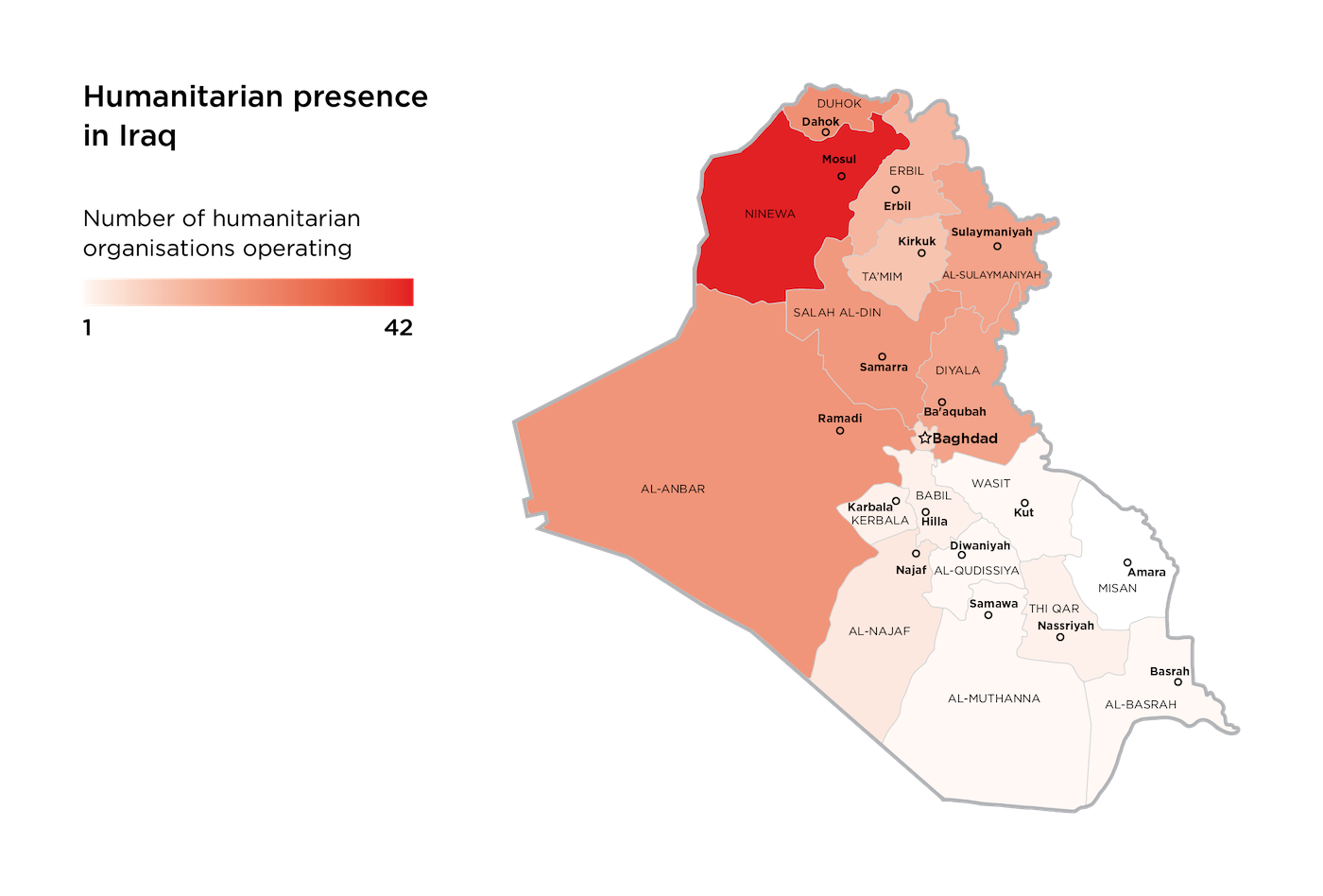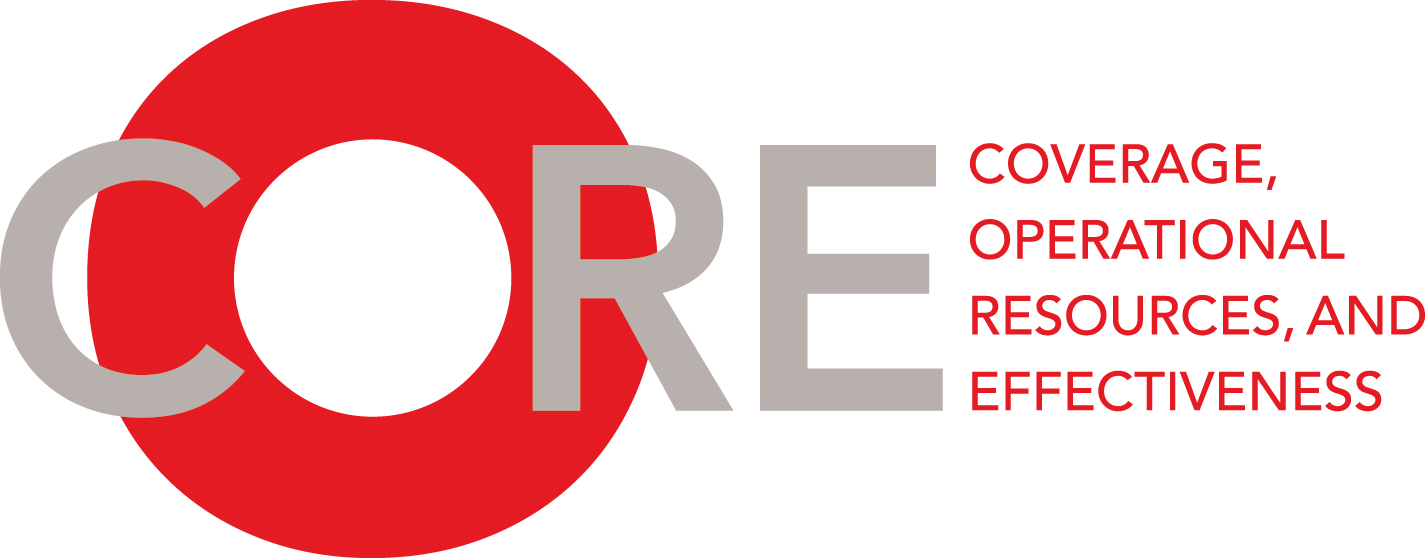Iraq
| CORE Programme I Haiti | Myanmar | Iraq | Ethiopia: Tigray | Afghanistan | Northeast Nigeria | Central African Republic | Global Report

Map source: OCHA, https://www.humanitarianresponse.info/en/operations/iraq/iraq-humanitarian-operational-presence-3w-2021
This SCORE report features findings from a survey of 502 people in the central and northern governorates of Iraq (62% men, 38% women) conducted in May 2021. A follow-up survey of 120 of those respondents in June 2021 (58% men, 43% women) probed further into the results. Live operators for GeoPoll conducted the surveys in Iraqi Arabic and Kurdish. Humanitarian Outcomes researchers conducted anonymous interviews with 20 key informants among the humanitarian organisations working in Iraq, as well as donor government representatives.
Summary
Iraq is a post-conflict humanitarian context, which, while not contending with major conflict and extreme insecurity, is marked by low humanitarian presence and coverage of needs. Of the estimated 4 million Iraqis who require humanitarian assistance, the coordinated humanitarian response plan (HRP) has targeted only 1.5 million, and so far reached only 0.6 million of them as of June 2021.
In the years since ISIS forces in the country were beaten back, insecurity and volatility have continued, but are much less of an operational constraint on aid organisations than they once were. Instead, a complex combination of political and organisational challenges in post-conflict Iraq constrains humanitarian access, including the Iraqi government’s relations with the international community, divergent priorities for aid and recovery, high operational costs, and a legacy of risk aversion owing to one of the most catastrophic acts of violence committed against the United Nations.
Iraqis surveyed in the northern and central governorates (where most displaced and returning people in need are located) confirmed the limitations and obstacles to accessing humanitarian access in their responses.
- Not enough aid is getting to the people and places where it is needed. A total of 71% of respondents reported needing aid while only 19% had received it.
- On the whole, people perceive the aid presence to be declining, and humanitarian conditions to be worsening.
- The Iraqi government is simultaneously the largest provider of aid in the country and the biggest obstacle to aid reaching where it is needed. After government-imposed restrictions, respondents said the next largest impediment was that the response efforts are not prioritising the most affected areas.
- NGOs as a group were far less visible to the public than other aid providers, such as UN agencies and International Red Cross and Red Crescent Movement actors. This may reflect the longstanding low-profile operational approach adopted by many NGOs, especially international ones, since the early days of the post-invasion response.
Aid actors have mostly aimed their coordination and advocacy efforts at addressing the bureaucratic constraints on their access and limited aid programming, like the cumbersome processes for travel and work authorisations. Larger issues of humanitarian access remain to be tackled, however, including fostering greater understanding and respect, frankly addressing claims and perceptions of partiality and favouritism, and creating a more permissive environment for humanitarian action.
At the same time there is evidence that the low coverage is also due partly to self-imposed constraints by the humanitarians, including limiting the target population to internally displaced people (IDPs) and returnees, an overly restrictive security risk management system imposed by the UN, and the reluctance of some NGOs to expand their programming outside of camps and familiar areas. Consequently, the most present and effective actors were those organisations, often local ones, that were relentlessly proactive and communicative with authorities, seeking solutions or workarounds. This comes through in the population survey as well, with respondents saying that the best thing aid actors could do to improve access would be to consult more with communities and work with local authorities.
Download to read the entire report.
